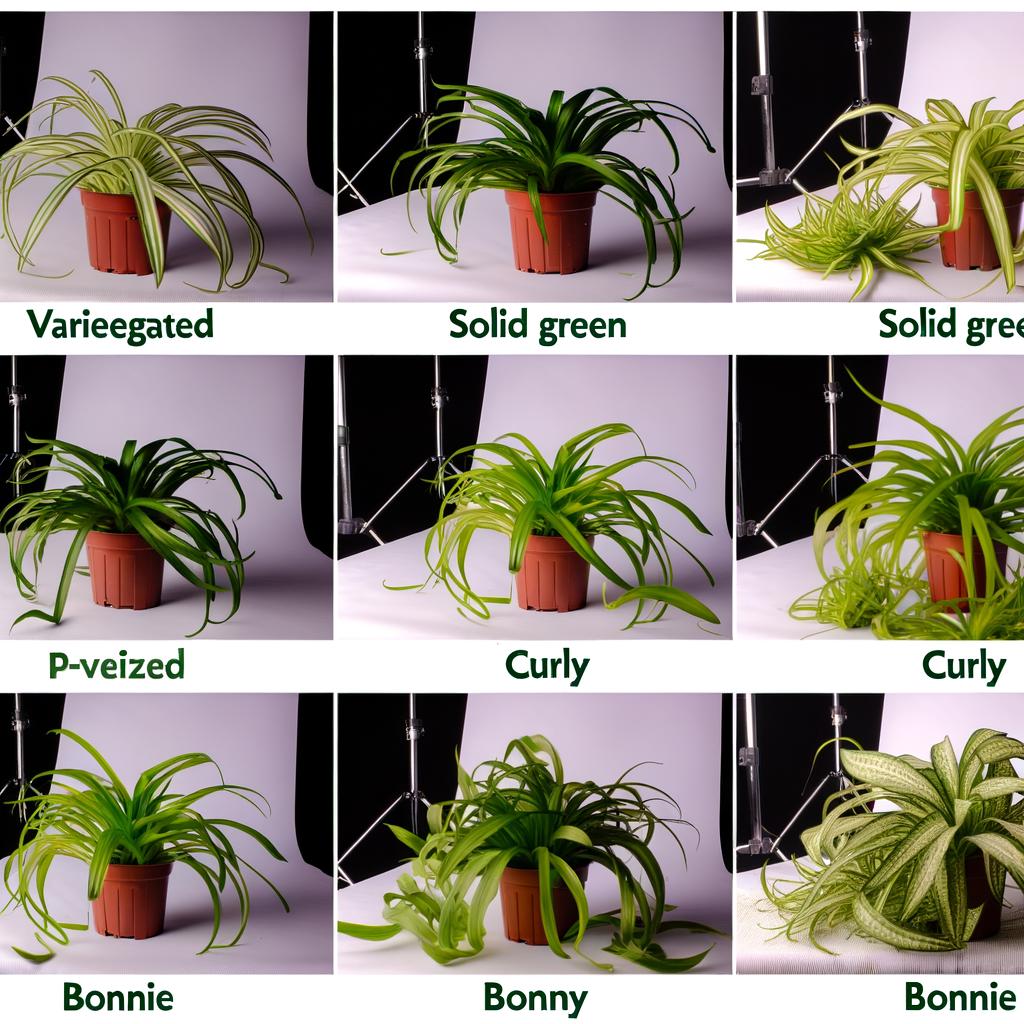Types of Spider Plants: Complete Guide to Varieties and Care
Spider plants come in several beautiful varieties, each with unique characteristics and care requirements. Understanding the different types can help you choose the perfect spider plant for your home. All varieties follow similar spider plant care principles, but some have specific needs. Many of these varieties are excellent for spider plant propagation and can produce beautiful spiderettes.

Understanding Spider Plant Varieties
Spider plants (Chlorophytum comosum) are known for their adaptability and ease of care, but different varieties offer unique visual appeal and growth characteristics. While all spider plants share basic care requirements, understanding their differences can help you provide optimal care and choose the right variety for your space.
Common Characteristics:
- • All varieties are non-toxic to pets and safe for cats
- • Excellent air-purifying properties
- • Easy to propagate and care for
- • Adaptable to various light conditions
- • Produce spiderettes for propagation
Major Spider Plant Varieties
Variegated Spider Plant (Chlorophytum comosum 'Vittatum')
The most popular and recognizable variety, featuring green leaves with distinctive white stripes running down the center. This classic variety is often what people picture when they think of spider plants.
Characteristics:
- • Green leaves with white center stripe
- • Arching, graceful foliage
- • Grows 12-24 inches tall
- • Spreads 12-36 inches wide
- • Produces abundant spiderettes
Care Requirements:
- • Bright, indirect light
- • Moderate watering
- • Well-draining soil
- • 60-75°F temperature
- • Regular fertilization
Propagation Success: Very high success rate for producing spiderettes. Excellent choice for beginners learning spider plant propagation.
Solid Green Spider Plant (Chlorophytum comosum 'Solid Green')
A beautiful variety with solid green leaves without any variegation. This variety offers a more traditional, lush appearance and is often preferred for its simplicity and elegance.
Characteristics:
- • Solid green leaves
- • No variegation patterns
- • Slightly darker green color
- • Similar size to variegated
- • Robust growth habit
Care Requirements:
- • Tolerates lower light better
- • Same watering needs
- • Hardy and adaptable
- • Less prone to leaf burn
- • Excellent for low-light areas
Best For: Low-light situations and those who prefer a more traditional green plant appearance. Follows the same spider plant care guidelines as other varieties.
Curly Spider Plant (Chlorophytum comosum 'Bonnie')
A unique and eye-catching variety with wavy, curly leaves that add texture and visual interest to any space. This variety is perfect for those looking for something different from the traditional spider plant appearance.
Characteristics:
- • Wavy, curly leaves
- • Variegated with white stripes
- • Compact growth habit
- • Unique texture
- • Smaller than standard varieties
Care Requirements:
- • Bright, indirect light
- • Consistent moisture
- • Higher humidity preferred
- • Protect from drafts
- • Regular misting beneficial
Special Care: The curly leaves can be more sensitive to environmental changes. Maintain consistent humidity and avoid sudden temperature fluctuations for best results. For detailed care instructions, visit our curly spider plant care guide.
Bonnie Spider Plant (Chlorophytum comosum 'Bonnie')
A compact variety with tightly curled leaves that create a unique, almost corkscrew appearance. This variety is perfect for smaller spaces and adds a distinctive touch to any collection.
Characteristics:
- • Tightly curled leaves
- • Compact growth
- • Variegated pattern
- • Ideal for small spaces
- • Unique visual appeal
Care Requirements:
- • Bright, indirect light
- • Moderate watering
- • Well-draining soil
- • Consistent temperature
- • Regular fertilization
Space Saving: Perfect for apartments or small homes where space is limited. The compact growth habit makes it ideal for hanging baskets or small pots.
Choosing the Right Spider Plant Type
Selecting the right spider plant variety depends on your specific needs, space constraints, and aesthetic preferences. Consider these factors when making your choice.
For Beginners
Start with the classic variegated variety for the most forgiving care experience.
- • Variegated Spider Plant
- • Solid Green Spider Plant
- • Easy to find and care for
- • Forgiving of care mistakes
For Small Spaces
Choose compact varieties that won't overwhelm your space.
- • Bonnie Spider Plant
- • Curly Spider Plant
- • Perfect for hanging baskets
- • Compact growth habit
For Low Light
Some varieties tolerate lower light conditions better than others.
- • Solid Green Spider Plant
- • Adapts well to shade
- • Less prone to leaf burn
- • Hardy and resilient
For Visual Interest
Choose varieties with unique characteristics for added visual appeal.
- • Curly Spider Plant
- • Bonnie Spider Plant
- • Unique textures and forms
- • Conversation starters
Care Differences Between Varieties
Light Requirements
Variegated Varieties:
Need bright, indirect light to maintain variegation. Too little light can cause the white stripes to fade.
Solid Green Varieties:
More tolerant of lower light conditions. Can thrive in areas with less natural light.
Watering Needs
Curly Varieties:
May need slightly more consistent moisture due to their unique leaf structure.
Standard Varieties:
Follow standard watering guidelines - water when top inch of soil is dry.
Propagation Success Rates
High Success Rate:
Variegated and solid green varieties typically produce abundant spiderettes with high propagation success.
Moderate Success Rate:
Curly and bonnie varieties may produce fewer spiderettes but are still relatively easy to propagate.
Regardless of the variety you choose, all spider plants benefit from the same basic spider plant care practices. The main differences lie in light requirements and propagation tendencies. For detailed propagation information, visit our spider plant babies guide.
Quick Navigation
Related Guides
-
Spider Plant Care
Essential care tips for all varieties
-
Spider Plant Babies
Learn to propagate your chosen variety
-
Plant Care Glossary
Understand plant care terminology